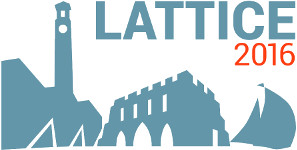Speaker
Prof.
Stefan Meinel
(University of Arizona / RIKEN BNL Research Center)
Description
Experimental results for mesonic $b \to s \mu^+ \mu^-$ decays show a pattern of deviations from Standard-Model predictions. These deviations could be due to new fundamental physics or due to an insufficient understanding of hadronic effects. Complementary information on the $b \to s \mu^+ \mu^-$ transition can be obtained from $\Lambda_b$ decays. This was recently done using the process $\Lambda_b \to \Lambda \mu^+ \mu^-$, where the $\Lambda$ is the lightest strange baryon. A further interesting channel that is being analyzed by LHCb is $\Lambda_b \to p^+ K^- \mu^+ \mu^-$, where the $p^+ K^-$ final state receives contributions from multiple higher-mass $\Lambda$ resonances. The narrowest and most prominent of these is the $\Lambda(1520)$, which has $J^P=\frac32^-$. We discuss our progress toward a lattice QCD calculation of the relevant $\Lambda_b \to \Lambda(1520)$ form factors.
Authors
Gumaro Rendon
(University of Arizona)
Prof.
Stefan Meinel
(University of Arizona / RIKEN BNL Research Center)

